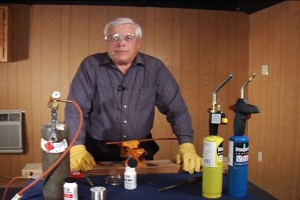When hundreds of the top ammonia refrigeration engineers, manufacturers, contractors, and end users gather in one place, technical talk is sure to follow.
Such was the case at the most recent International Institute of Ammonia Refrigeration (IIAR) Conference in Nashville, Tennessee. From workshops to panel discussions to technomericals on the expo floor, to corridor conversations, creating refrigeration efficiently and environmentally correct dominated. That was certainly the case with technical papers presented during the conference that were summarized by the authors who then field questions.
In this — the first of two articles — four of the technical papers are summarized here. (The remaining four will be featured in the June 2 Refrigeration Zone.) While they can be viewed in their entirely at the IIAR website, they are presented here to give contractors and service technicians an overview on some of the latest developments.
Refrigerant Discharges
In a presentation comparing various methods of mitigating overpressure-induced ammonia refrigeration discharges, Don Fenton of the Department of Mechanical Engineering at Kansas State University discussed the research he and his colleague Tyler Hodges did.
He noted, “A literature review was conducted, and among the methods discovered, five were selected for further study and include: discharge into a tank containing standing water, discharge into the atmosphere, discharge into a flare, discharge into a wet scrubber, and an emergency pressure control system. All the methods were compared applying quantitative risk analysis where failure rates of each system were combined with ammonia dispersion modeling and with the monetized health effects of a system’s failure to contain an ammonia release.
“It was determined that the ammonia release height had the greatest influence on the downwind cost impact relative to the other variables, including weather conditions and release from multiple sources. While the discharge into a tank containing standing water was determined to have the lowest failure rate, the other discharge methods can be designed to have comparable failure rates and comparable release consequent cost. The emergency pressure control system, now required by codes, used in conjunction with the other ammonia release mitigation systems, was determined to be very effective.”
Layers of Protection
Providing what were called “layers of protection in an ammonia refrigeration system” was discussed by Peter Jordan, senior principal engineer for Mbd Risk Management Services. He described what he said were “layers of protection analyses (LOPAs) to analyze specific scenarios in two ammonia refrigeration systems. The LOPAs were able to formally analyze the reliability of these systems and, to a certain extent, produce results which can provide guidance.”
The point he stressed was, “Everyone involved in the ammonia refrigeration industry must continuously strive to design, operate, and maintain the safest possible systems. The potential risk associated with an unsafe system should be readily apparent.
“But we often ask ourselves the question ‘When is it safe enough?’ LOPA can be very helpful with the question.”
Air-Cooled Condensing
When it comes to comparing evaporative (evap) and air-cooled condensing for ammonia systems, Doug Scott of VaCom Technologies told audience members that even though “use of air-cooled ammonia systems is uncommon, the efficient use of air-cooled condensing could allow the benefits of ammonia to be realized more widely.”
Among his findings:
“The use of air-cooled condensers for ammonia systems is potentially attractive. Energy cost is greater in all areas evaluated, but when water costs are considered, the net operating cost is lower in all six U.S. locations considered in this paper.
“Energy usage for air-cooled condensers over evap-cooled condensers ranged from almost no increase to an 8 percent increase in Denver.
“Water usage was calculated based on heat rejection from the hourly simulation and typical water bleed rates. Actual water usage may be lower or could be substantially higher if not carefully controlled. The study results are dependent on control assumptions, in particular the use of variable-speed control of all fans in unison and ambient-following control.
“Given the wide range of water costs, utility rates (and rate shapes in peak periods), site-specific analysis may often be necessary to accurately identify operating costs of evap-cooled and air-cooled condenser options.
“Future work is required for both evap-cooled and air-cooled condensers to evaluate installed average performance in order to achieve more accurate annualized analysis, as well as establish performance expectations.
Exhaust Aspect
And in a report on ammonia refrigeration as related to machinery exhaust treatment, Kim Snowden of Snowden Engineering said attention should be paid to this because “Historically, most ammonia refrigeration machinery rooms exhaust directly to the atmosphere. While this practice is fine during normal operations, it can leave emergency responders in a predicament during and following a release.”
Her paper, she said, “presents treatment options and considerations to reduce the ammonia concentration exhaust air before it discharges to the atmosphere.”
In exploring ways of dealing with this based on field research, Snowden said, “Overall, discharge treatment of ammonia refrigeration machinery room ventilation is a good tool to be aware of. In no way should it be mandated for every facility. The work IIAR and others did to work with code officials to remove the code requirement for discharge treatment in ammonia refrigeration systems is commendable. It serves as a great example where easing of regulations allows facilities to work with their local fire departments to weigh risks and options for the specific facility and siting.”










